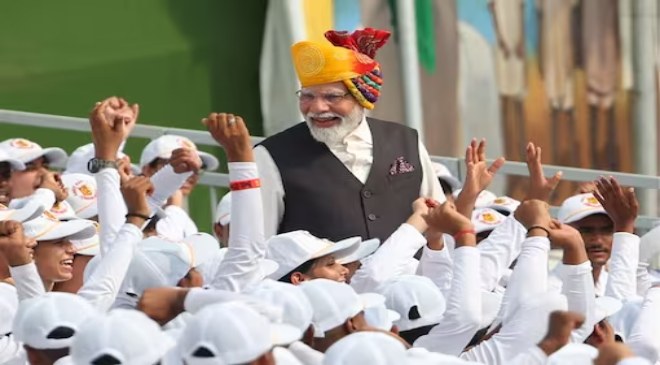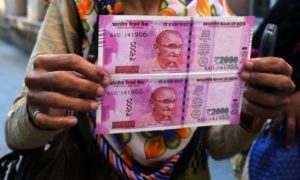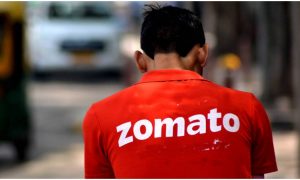In 2014, the Prime Minister of India was interviewed by Fareed Zakaria of CNN. While some of the questions by Zakaria focused on China, and compared the autocracy with India, PM Modi stated that it would make more sense to compare democracies. Just over nine years later, in his latest interview with the Financial Times, the question and the answer were both repeated. Beyond that, there are several other consistencies in tone and approach to the western media houses that mark these rare dialogues, but also represent the larger Anglo gaze on India. They are designed to approach the subject with hostility.
Read More: Vibrant Gujarat: ₹67,000 crore worth investment proposals signed in petrochemicals sector
Two years before his chance to interview the Prime Minister in his first term, Zakaria had stated that Narendra Modi was “unlikely to be a national leader in India,” or even a regional leader for much longer, and that Zakaria himself violently disagreed with the then Chief Minister.
The Financial Times authors have similarly held outright political prejudices against the subject of their interview, which reflect heavily in their article. John Reed, for example, FT’s South Asia bureau chief, based in New Delhi, writes articles in outright support of Indian Opposition leaders, the latest being about Mahua Moitra.
According to him, Moitra was apparently disqualified from the lower house of India’s Parliament, not due to her treasonous cash-for-query activities and for sharing passwords with a Dubai-based businessman, but because of her political views.
He makes a mention of how “powerful” Adani is, a statement oft-repeated by Rahul Gandhi, an American favourite due to his half-European, half-obedient-Indian heritage.
His article, however, makes a point of ignoring that Adani’s business rival, Darshan Hiranandani, who has admitted to collaborating with Moitra and turned witness against her, has been powerful for decades and comes from a family of powerful businessmen.
In the same breath, a meaningless line about the lack of power of Indian women in politics is added in to play into anti-woman stereotypes about India to cater to people who prefer the idea over the data.
The FT article is more staff commentary than the Prime Minister’s interview, but then, the infantilisation of readers has been common to far-Left commentary for years.
The first paragraph of the piece makes a mention of the name change of the street on which the Prime Minister’s official residence is located. The new name, Lok Kalyan Marg, is in keeping with his party’s origin from the social welfare organisation — the Rashtriya Swayamsevak Sangh — from the view of serving citizenry, not ruling over them like the colonisers once did. The insinuation of the article, however, is that it is populist, a term bandied about by Western organisations for world leaders who are less servile to them, and more interested in their own countrymen.
The following sentence, “…has parading peacocks and inner courtyards with ornate flower displays,” is supposed to contrast his “purported” welfarism from paragraph one with the opulence of his residence, the same one multiple Indian Prime Ministers have resided in.
It is as if the Prime Minister of India must live in a hovel, unlike the grandeur to be afforded to the White House. The symbolism of the national bird, the peacock, gracing his residence were conveniently ignored.
A reason for suspicion of such writing in the article is that the same publication’s portrayal of Manmohan Singh by Gideon Rachman in 2014 is favourable — a servile, scholarly host whose “achievements”, an economic restructuring forced by a balance of payments crisis that must be painted in good light. While the current Indian Prime Minister is known to travel extensively, even into the most difficult of situations, and had a security scare where the Indian National Congress Chief Minister broke protocol in Punjab where the INC ruled almost two years ago.
Read More: No, RBI Did Not Impose A Deadline Or Invalidate Old Rs 100 Rupee Notes
Modi does not manage India’s growth from shadowy quietness, as suggested by the authors. Apparently, the Indian leader who is the most popular elected leader in the world since years now, also represents a risk to his constitution for the sole reason that his citizens keep electing him.
The platform functions as scribe for Modi’s political opponents by repeating their takes. The tonality used in the article consistently elicits a sense of suspicion and cynicism regarding the world leader.
One example is where the PM “…insists that he is” confident of victory. The verbiage adds that little hint of suspicion; one would merely state a thing they were assured of, unless there remained a chance that they were enforcing a result, likely through unfair means, wherein one might “insist” instead.
The authors then proceed to outright lies — of three state elections mentioned as being won in close contests, all three were won by large margins and were not close at all, even beating predictions of a close race in Chhattisgarh.
They also reinforce the bogey of Hindu majoritarianism in the country. Hindu institutions and people continue to be discriminated against by the Indian state. The BJP has not made the Hindu religion at the centre of public life by force, as is implied here. It has allowed the majority to practice their religion more freely in a few states.
If only the FT’s articles about Indian Opposition leaders included criticisms of their political rivals, one might read this piece in good faith. Unfortunately, repeating unsubstantiated Opposition accusations for readers unbothered about a counter has been par for the course.
The article, purportedly interviewing the PM, cites Opposition talking points derived from a stable of American labels — democratic backsliding, secular values, populist, Muslim minority and importantly, Hindu — more than it cites the PM. It states “…critics have accused Modi’s government of cracking down on rivals, curtailing civil society and discriminating against the country’s large Muslim minority.”
Muslims are the second majority in the country, instead. Hindu beheading sprees by Islamists are of no concern, of course. While friction with North American counterparts is due to anti-Indian terrorism and violation of the Vienna Convention by Canada and the US, FT insists on them being caused due to the “plots for extrajudicial killings”.
India is not part of a US-led alliance, and the article showcases it as a perceived negative. The Modi government has attempted to shift westward, but here is regurgitation of CIA-speak – a designated terrorist is a Sikh leader, as if it is his religion that is of concern for the Indian state, not his terrorism.
The obviously hostile tone is projected not merely onto the Prime Minister himself, but also onto those who vote for him. Consistently brushed as a monolith who “claim” what can be proven or stated, the authors state that to supporters “such concerns are little more than the refrain of a chattering class out of touch”.
Modi himself has been considerate of and polite with many “concerned” critics, even engaging with undisguisedly prejudiced publications. His supporters, though, could care less about chatter that misinforms about a thriving nation in hopes for a puppet régime installation.
The Modi government’s administration seems to have changed enough that despite the garish biases that stare a reader in their face, data about the country proves much too positive for even the FT to directly papered over, but using the third-party-effect, the authors wonder if it is a “false dawn” in the nation.
They report “Modi prides himself on…”, a profile written as if by a schoolteacher reporting on a ward. It is unlikely that the Prime Minister has himself said anything like that, but one can depend on the Anglo-media to condescend to the leader of the world’s largest democracy.
The FT cites unemployment as a major concern, without comparison with previous unemployment data. Of incredible interest is that a week after the security breach into the Indian Parliament by protesters, they and the Opposition supporting them also all cited unemployment.
Some have always believed the worst of India, and the publication chooses to employ them on that basis. Still, in the spirit of fair commentary, the authors could have reined in their prejudices. Any pretense of fairness is wiped away here, with paragraphs advertising the one political leader in the country without any political acumen, dependent solely on his lineage for continuing in politics. The article, laughably, calls him the “chief political nemesis”.
The repeated remonstrations against the Adani group reminds one of how Western organisations will gather in force to employ illegitimate pressure on Indian conglomerates at the cost of the citizens.
Muslim victimhood is a heavy part of the narrative catered to in this article, as with so many about India. Apparently, anti-Muslim speech has proliferated under the present government. That correlation is not causation requires critical analysis, which the FT depends on readers to not employ. The rise of such “hate-speech” is much more likely to be caused by proliferation of all varieties of hate-speech since the last decade has seen the rapid growth of social media, but it is to the Modi government that the article attributes it too.
Anti-Hindu hate speech has also proliferated massively in the same period, but the FT’s Hinduphobic biases prevent them from citing it. One of the more insidious issues is that this article is printed in the wake of attacks on the convoy of Muslim scholar and Kerala Governor Arif Mohammed Khan, a BJP member, who was attacked by the Islamofascist group SFI, enabled by the Communist government in the state.
“A Threat to Democracy” wonders a sub-heading. The succeeding paragraphs cite nothing at all about how democracy is threatened. Disingenuously dishonest, authors focus on one of the largest global Muslim populations who have prospered under the BJP government, while ignoring actual minorities in India.
Indians seem to welcome a PM who stands his ground against unsubstantiated Western allegations of varying hues — political, social, economic — instead of servilely settling for handouts so that a few publications catering to the Western gaze offer them a pat on the head.
If one were to read portrayals of Rahul Gandhi and Manmohan Singh by the same publication and compare them with anything on PM Modi, they are likely to be taken aback by the contrast in tone.
While the patronising and condescension remains, the commentary on the latter is unabashedly suspicious, shocked even. Considering the opportunity to interview the leader of a thriving economy whose fiscal conservatism combined with a digital economic infrastructure unprecedented in the world has pushed the nation to the forefront of the world, the authors have chosen to advertise Indian opposition “leaders” instead.
Hostile interviews are set up to distract from any subject in depth and instead focus on reinforcing labels already applied by partisan commentators to help inform no one but serve as yet another piece to be cited in far-left circle-jerk commentary against India.
Read More: Noida House Party Liquor License Cost: Check Full Online Application Process, Fees, Other Details
It is a travesty that the Modi administration does not choose to engage some of those outside this loop. While one need not preach to a choir, it is futile to expect partisan publications such as the Financial Times to offer balanced perspectives.





































